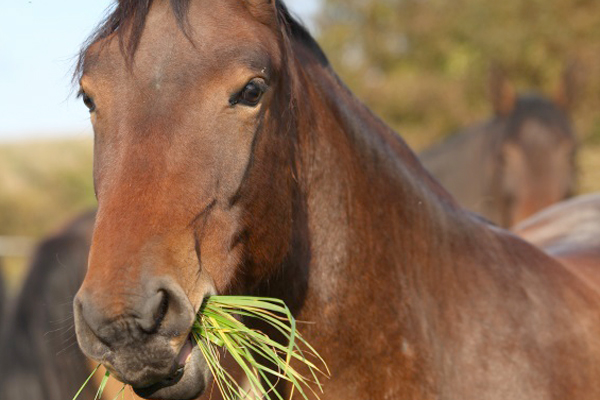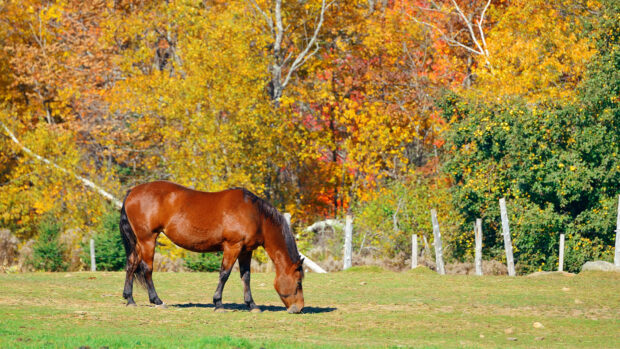Promotional Feature
Leading insurer Petplan Equine has revealed the top five conditions it received claims for in 2016. Laminitis was the number four health problem, so here we take a look at what it is, how it affects your horse and how to manage it.
What is laminitis?
Laminitis is a serious, painful and debilitating condition affecting the horse’s feet. Laminitis means inflammation of the laminae, a soft tissue structure found in the hoof. Every case should be dealt with promptly and the condition should never be underestimated.
The two forms
Acute laminitis is the early stage of the disease when the animal is uncomfortable and showing signs of lameness, but major damage has not yet happened within the hoof.
Chronic laminitis is when the pedal bone sinks or rotates within the hoof capsule, leading to permanent damage.
What are the clinical signs?
- Lameness
- Heat in the hoof and surrounding areas
- Increased digital pulses in the affected feet
- Sometimes it is so distressingly severe that the affected animal cannot stand
- The horse, when standing, may well lean back on to its hind feet to relieve the pressure on its front feet
What can I do if my horse is suffering?
First, contact the vet. Severe cases of laminitis in horses will need painkillers and other treatment urgently; this may include frog supports, medication to control blood pressure, and treating any underlying illness that may be causing the laminitis — while mild, chronic cases will require planned action involving both vet and farrier. If laminitis is suspected, never force the horse to walk or exercise.
It is possible to tape frog supports onto the feet to help relieve pressure on the laminae. However, this should only be done following your vets recommendation. If your horse or pony appears to be reluctant to move due to laminitis while out at grass, it may help to fit frog supports before slowly bringing them in or travelling them home, ideally in a low-loading trailer.
All laminitis cases should be box-rested, ideally on non-edible bedding. A very deep bed (40-50cm) of dust-free shavings is best. This can act as support for the feet nearly as effectively as — and more simply than — frog supports. It also allows affected horses to lie down and take the weight off their feet.
Total box rest is important. This should continue for at least 30 days, during which the diet needs to be adjusted to ensure that the horse’s weight is controlled. It is crucial that any overweight laminitic loses weight, but this must be a gradual process. This is something your vet will advise you on.
How can I help prevent laminitis in my horse?
- Do not allow your horse to overeat foods rich in carbohydrate or rapidly fermentable fibre, i.e. cereals, coarse mixes, rapidly-growing or fertilised grass
- Be aware that any illness which involves toxaemia can be the catalyst for laminitis. This may be a bacterial infection or following the ingestion of plant or chemical toxins.
- If your horse has Cushing’s disease, he will be more prone to laminitis. Be extra vigilant if there is a frost or a flush of new grass growth.
- Take care not to do too much work on hard ground. Concussive laminitis (also known as road founder) can happen when horses are subjected to fast or prolonged work on hard surfaces: they may develop laminitis as a result of trauma to the laminae, particularly if their horn quality is poor. If your horse is a “good doer” there is a chance he may be hypothyroid or have an abnormal peripheral cortisol enzyme system. If you think this may be happening, talk to your vet so that you can manage the condition to avoid laminitis.
- Avoid turning horses out in very cold weather when the grass is covered in frost. Stressful situations should be avoided whenever possible.
- Make sure that your vet is aware if your horse is prone to laminitis as some prescribed drugs, such as corticosteroids, can precipitate the condition. In terms of general management, not turning your horse out on rich grass while he is fatter than condition score of three is good practice. If he has a fat deposit along his crest or at the tail head, around the sheath or udder or over the loins, also take this precaution.
You should be able to feel his ribs easily by running your hand along his side, yet you should not be able to see his ribs. Limiting the grass intake can be accomplished by using a grazing mask or muzzle or by restricting the area available for grazing.
For more lameness advice from Petplan Equine visit our lameness pages. Horse insurance can help cover the costs of unexpected veterinary care, so make sure any horses in your care are covered.

Laminitis is a serious, painful and debilitating condition affecting the horse’s feet. If you are worried your horse is suffering, contact your vet.
Petplan Equine paid out over £350,000 in claims for laminitis in 2016
For further information click here, or for more advice on Petplan Equine’s top five conditions, click here.
Petplan Equine’s top five most commonly occurring claims in 2016 were:
1) Arthritis
2) Colic
3) Gastric ulcers
4) Laminitis
5) Desmitis (inflamed ligaments)





